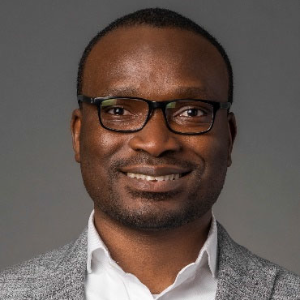Title : Trend in stroke incidence and admission blood glucose in louisiana
Abstract:
Introduction:
Stroke is still a major cause of debilitating disability despite advancements in available clinical therapies. Raised admission blood glucose concentration is associated with poor outcomes of stroke, even in non diabetics. Hence, reporting stroke burden and outcome is invaluable for evidence-based policy direction and research. We evaluated trends in stroke incidence and outcomes in the last ten years in the state of Louisiana, a region endemic with risk factors for stroke. Methods: A ten-year retrospective analysis of stroke patients treated at a large integrated healthcare system in Louisiana, from January 01, 2013, through December 31, 2022, was conducted. Data from only inpatients with ischemic and/ or hemorrhagic stroke, aged 18 years and older, were included.
Results:
A total of 63,763 patients with first-ever stroke were identified. Admission blood glucose was measured in 77.3% (49,307) of identified patients with a median hospital stay of 53 (Q1:26 - Q3:136) hours. Of the 49,307 inpatients, Ischemic stroke was more commonly observed than hemorrhagic stroke (64.9%(41,398) vs 9.9%(6,318)). A significant and progressive increase in annual stroke incidence at an average age of 66.3 ± 15.3 was observed, regardless of stroke type. In-hospital mortality steadily declined over the years with a total of 19.9% (9809). A significant difference in stroke incidence by sex (p=0.0003), marital status (p<0.0001), race (p=<0.0001), and insurance coverage (p<0.0001) was observed. The most prevalent comorbidities were dyslipidemia 55.4%(27,319), chronic renal disease 41.7%(20,558) hypertension 38.8%(19,123), diabetes mellitus 36.7%(18,088).
Conclusion:
Whilst stroke incidence is steadily increasing in Louisiana, in-hospital mortality is declining and admission blood glucose monitoring significantly increased in the last three years.
Audience Take Away
- Explain how the audience will be able to use what they learn: The audience will learn of changes in stroke incidence and mortality in Louisiana as well as the importance of monitoring blood glucose concentration in the context of ischemic stroke. Importantly, our data will show annual changes in the demographics as well as comorbidities which impacts stroke outcomes
- How will this help the audience in their job: This will form the basis of quoted statistics for a stroke belt in relevance to research and teaching
- Is this research that other faculty could use to expand their research or teaching?: Our findings will inform institutional and regional research on stroke incidence and changes in demographics for either expansive research in this realm or for teaching purposes
- Does this provide a practical solution to a problem that could simplify or make a designer’s job more efficient? Our findings will show that whilst in-hospital mortality is significantly decreasing, more work is desired for stroke related disability
- List all other benefits: Although blood glucose monitoring in acute stroke is only correlative to the steady decline in stroke mortality during hospital stay, more advocacy is warranted for ameliorating the impact of acute post-stroke hyperglycemia




